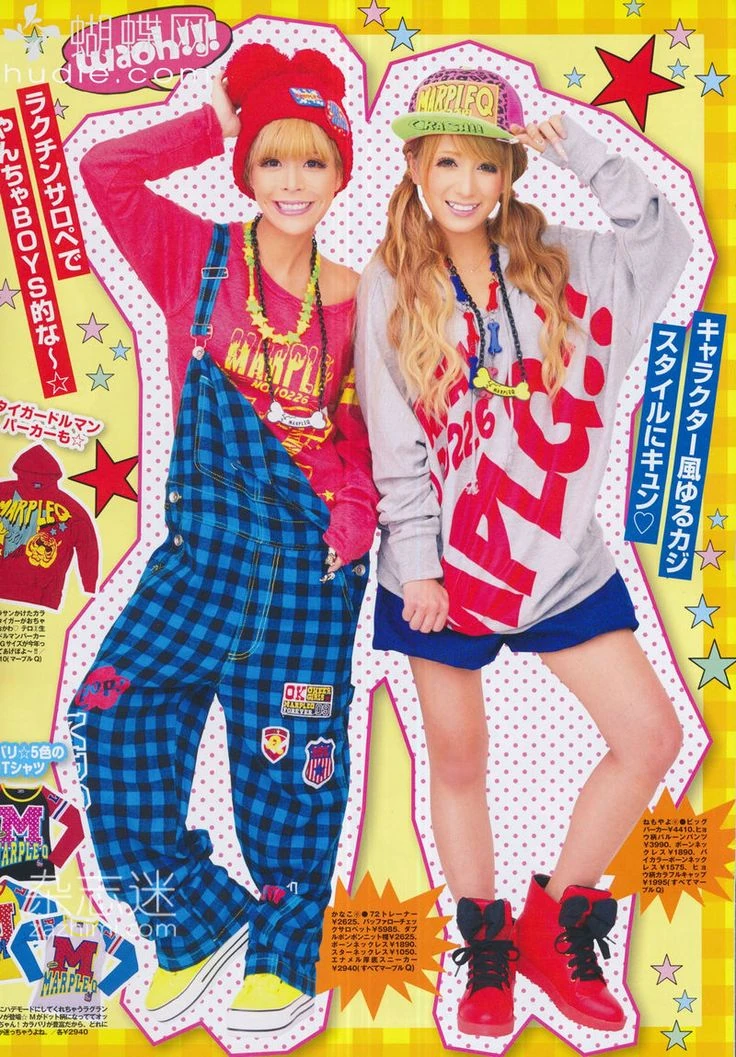Gyaru fashion, originating from Japan, has encapsulated the interest of fashion enthusiasts worldwide. Known for its vibrant and eclectic styles, Gyaru is more than just a fashion statement; it’s a cultural movement that embodies youthful rebellion and artistic expression. In this article, we will delve into the origins of Gyaru fashion, its distinctive styles, and its recent resurgence among younger generations.
Originally, Gyaru, which translates to ‘gal’ in English, emerged in the 1970s and 1980s as a response to traditional Japanese beauty standards. It quickly evolved into a distinct subculture, characterized by flashy outfits, dramatic makeup, and unique hairstyles. The look often includes dyed hair, tanned skin, and an unmistakable emphasis on individuality.

A visual representation of Gyaru fashion styles.
Source: Japanese Fashion Wikia
As Gyaru culture developed, it spawned various substyles, each showcasing unique interpretations of the core Gyaru aesthetic. Among these substyles are:
- Hime Gyaru: Often referred to as ‘princess Gyaru’, this style emphasizes feminine and romantic designs with ruffles, lace, and pastel colors, showcasing a whimsical look.
- Ganguro: Characterized by dark tans, vivid clothing, and extravagant makeup, Ganguro reflects an extreme departure from traditional Japanese beauty norms, celebrating individuality and flamboyance.
- Kuro Gyaru: This substyle is associated with a darker aesthetic, often featuring black clothing and elaborate accessories, drawing inspiration from gothic imagery.

A group of Gyaru fashionistas showcasing their styles.
Source: The Gyaru Wiki
The popularity of Gyaru fashion peaked in the early 2000s, driven in part by its portrayal in Japanese pop culture, including anime and magazines specifically targeting young women. Iconic images of Gyaru girls adorned magazine covers and dominated the streets of Harajuku, a hub for youth fashion trends in Tokyo.
With the rise of social media platforms, a new generation of Gyaru enthusiasts has found ways to express their individuality, creating online communities that celebrate this bold fashion. Platforms like TikTok and Instagram have become virtual runways for showcasing Gyaru-inspired outfits and styles, reviving interest among Gen Z and a younger audience.

Historic image from Gyaru fashion trends in Shibuya.
Source: Savvy Tokyo
Interestingly, the Gyaru revival illustrates the cyclical nature of fashion. As younger generations seek to break free from traditional norms and express their style, the Gyaru movement resonates with their desire for flexibility and creativity in fashion. This resurgence is visible in the latest trends where elements of classic Gyaru styles are modernized and blended with contemporary aesthetics.
Some scholars and critics have debated if the Gyaru style offends cultural heritage or simply strikes a balance between cultural appreciation and innovation. Importantly, the essence of Gyaru lies in self-expression, which fosters an environment where personal style can coexist with cultural roots.

Gyaru fashion emphasizing individual styles and personal expression.
Source: Pinterest
In conclusion, Gyaru fashion remains a vibrant and dynamic part of Japanese culture, continually evolving while preserving its roots in self-expression. As interest in Gyaru grows, both locally and internationally, the movement reinforces the power of fashion to challenge norms, inspire confidence, and connect communities. Whether through bold fashion choices or embracing traditional elements, Gyaru will likely inspire future generations as they carve their fashion paths.